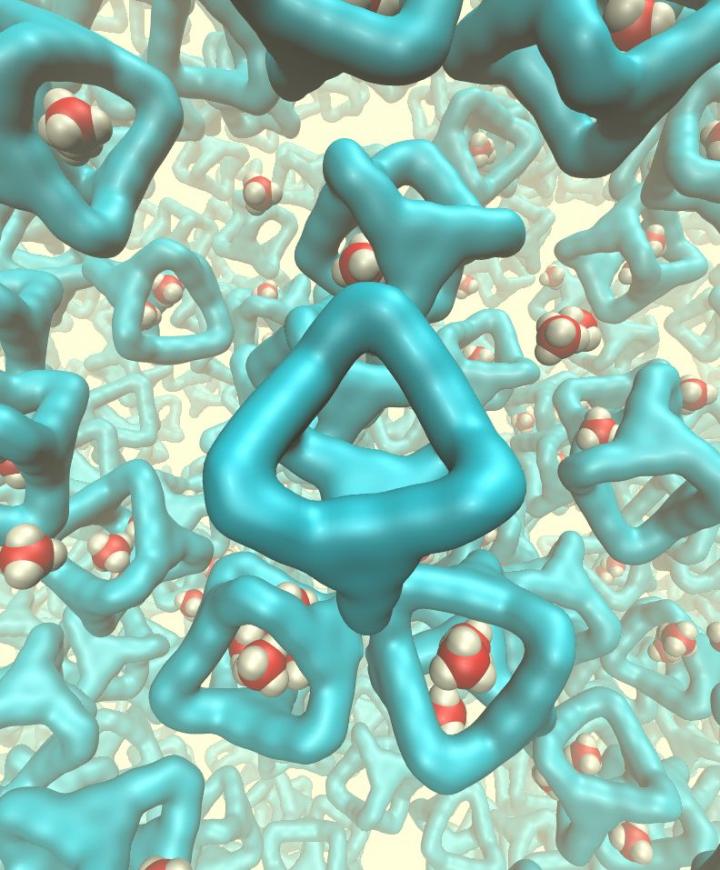Scientists Invent A Liquid With Holes In It
Unique porous fluid could suck up and lock away unwanted molecules

You’ve heard of holy water, but what about hole-y water?
In a paper published this week in Nature, researchers announced that they have developed a liquid with its molecules structured in such a way that they have ‘holes’ within the liquid. Picture a sponge that can flow like water, and you’ll have a general idea of what they’ve managed to create.
“Materials which contain permanent holes, or pores, are technologically important. They are used for manufacturing a range of products from plastic bottles to petrol. However, until recently, these porous materials have been solids. What we have done is to design a special liquid from the ‘bottom up’ – we designed the shapes of the molecules which make up the liquid so that the liquid could not fill up all the space. Because of the empty holes we then had in the liquid, we found that it was able to dissolve unusually large amounts of gas.” Stuart James, a co-author of the study said in a statement.
In an audio interview posted by Nature, James describes building the molecule, a cage-like structure made of carbon, hydrogen and oxygen with a an empty space or pore inside. Those “cages” were then dissolved into another liquid, a solvent. The solvent’s molecules were much larger than the cages, and couldn’t fit inside the “bars” so the cage-like molecules were able to keep their pores empty, ready and waiting to trap a smaller particle like a gas.
A liquid able to soak up gas could be a huge step forward in carbon-capture technology, a whole suite of technological innovations that seek to keep carbon dioxide, a potent greenhouse gas, out of the Earth’s atmosphere. James says that “a few” more years of research are needed before the liquid can be tested in chemical processes like carbon capture (or capturing methane, another greenhouse gas), but having a porous liquid is an incredible first step.